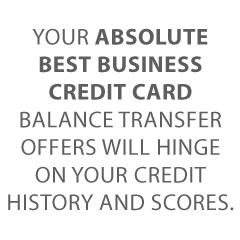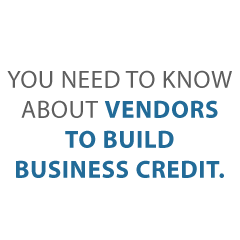
You Could Take Over the World with Business Lines of Credit
Well, maybe not the entire world. However, you can definitely take your business to a new level. If it’s in trouble, business lines of credit could be just the thing you need to get you over the hump. But what makes this a better option than any other type of business funding? Furthermore, where do you find a business line of credit? Never fear. We have the answers you seek.
What You Need to Know about Business Lines of Credit
A business line of credit is similar to a credit card, so many think they work exactly the same. They really do not. There are some major distinctions between the two. These distinctions make each one better suited for specific situations. For this reason, it is not a bad idea to have both at your disposal for use as needed.
Find out why so many companies use our proven methods to get business loans.
Solving the Business Lines of Credit Mystery
Surprisingly, business owners often do not understand what business lines of credit really are. The simplest explanation is that they are a revolving line of credit. In fact, they are very much like credit cards. For example, like a credit card, you have a limit and continuous access to that limit. At the same time, you make payments only on the portion you use each month.
Consider the following example. You have a $1,000 line of credit. You can use however much of those funds you need each month for whatever you want, unless your lender restricts use. If you use $200, then when you get your statement you will have to pay $200 plus the interest. You will not owe or pay interest on the whole $1,000 loan.
If you were to spend the $200, then spend another $50, you would pay on the $250, minus any payment already made, the next month. Your payments change as your balance changes. Just like with a credit card.
Access is generally granted through checks or a debit card connected to the line of credit account.
Business Lines of Credit vs. Credit Cards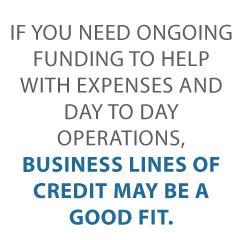
Business owners often ask what the difference is between business lines of credit and credit cards. Why is one better than the other? Truthfully, sometimes a credit card may work better. It just depends on your specific situation and needs.
The main differences you need to know are that a business line of credit typically has lower consistent interest rates. Also, there are none of the perks like 0% interest or cash back that you sometimes see with credit cards.
Unsecured Line of Credit vs Secured Line of Credit
There are two types of business lines of credit. You can get either an unsecured line or a secured line.
The fact is, an unsecured line of credit is harder to get. Also, it usually costs more than a secured line of credit.
This is due to the increased risk to the lender with an unsecured business line of credit. A secured business line of credit has the safety net of collateral. Therefore, if you cannot or do not pay, the lender can still use the collateral to recover.
Some business owners either do not have collateral to offer, or they have no interest in tying up their assets with financing. In this case, an unsecured line of credit may be an option.
An unsecured line of credit typically has strict approval guidelines and qualifications. Due to the increase in credit risk, they will also likely have higher interest rates and less favorable repayment terms.
3 Questions to Ask Yourself Before Looking for Business Lines of Credit for Your Business
While nothing is a guarantee, there are some things you can do to help ensure you get the best possible business lines of credit for your business. Start by asking yourself these questions.
-
Why Do You Need a Credit Line?
This is the basis of finding the best business line of credit for your needs. You have to actually know what your needs are. Here are some examples of how a business may use a line of credit.
- Buy or stock up on inventory, raw materials, or supplies while on sale. This can reduce cost of goods sold and consequently, increase the bottom line.
- Purchase or repair minor equipment when needed. This would be like a new printer or laptop. . Larger equipment, like an industrial freezer, would best be purchased with an equipment loan.
- Cover temporary gaps in cash flow or continuous, expected cash gaps due to timing issues. For example, if several bills are due at the beginning of the month and you know your largest contracts pay at the end of the month, you could cover those bills with the line of credit until your contracts are paid. The money is coming. It is reliable. However, the bills are due before the money comes. You can pay the bills with the line of credit. Then pay off the line of credit when the contracts pay.
Another example of this is a seasonal line of credit for a business that does the majority of its sales during a certain time of the year. A florist does a large percentage of sales during Valentine’s day, so a seasonal line of credit can come in handy to bridge the cash gap during other times of the year.
-
What is Available to You?
Shop around with different lenders to figure out which ones offer the best business lines of credit. You will want to look at factors such as interest rate and credit limit in relation to what you need and can afford.
Check with various types of lenders to get a feel for which ones offer what you need. Research larger banks, as well as small local institutions and credit unions. Don’t forget about online lenders either.
-
What is Your Business Credit Like?
Your ability to get approval for the best business line of credit will be directly related to your business credit. While lenders may also consider income and cash flow, they are going to rely most heavily on your business credit score when making an approval decision about a line of credit.
A lower business credit score does not necessarily mean you can’t get approval, but it could greatly affect your interest rate and credit limit.
Find out why so many companies use our proven methods to get business loans.
Consider signing up for a credit monitoring service that lets you keep tabs on your business credit and what is affecting it each month.
Once you have a handle on why you need a business line of credit, what is available, and what you may actually be eligible for, you can make a decision as to where you are going to apply and which product you are going to apply for.
Determining which of these lenders offers the best business lines of credit for your business goes back to knowing what you need, who has it, and who will approve you for it.
When Is a Line of Credit Better than a Credit Card?
If you are going to need to make payments, a line of credit is a better option. The reason is pretty simple. The credit rate is almost always lower. The few exceptions are those cards that offer 0% APR for a short period of time.
If you are going to use a credit card to make regular purchases that you are going to pay off immediately, and you qualify for a card with perks such as cash back, then you may find that you can benefit from using a credit card over a line of credit.
An example would be if you wanted to use your business credit card to make your monthly supplies purchase each month and then pay it off in the following month so that you could take advantage of the cash back.
To float a cash flow gap or make significant purchases that you will need pay out over a short amount of time, a line of credit is almost always the best choice.
Where Can You Find Business Lines of Credit?
Not all lenders offer them, but there are options available at many traditional and alternative type lenders. Which one you go with depends, again, on your specific situation.
Traditional lenders typically have the lowest interest rates. However, their repayment terms may be less flexible. They will also have harder to meet qualifications and a longer approval process. In addition, it can take several days after approval to have access to the funds.
An alternative lender will usually have easier to meet qualifications and more flexible repayment terms. The tradeoff is interest rates are much higher. The approval process is faster however, and in some cases, you can access funds in as little as 24 hours.
Where to Find the Best Business Line of Credit
Since most small businesses will have a hard time getting approval from a traditional lender due to poor credit or a lack of sufficient credit history, here are some examples of what some alternative lenders are offering currently.
Kabbage
Kabbage offers a credit line of up to $150,000 with no credit score required. The catch is that the interest rate is between 32 and 108%. The business must have been in existence for at least one year and have revenue of at least $50,000.
Due to the extremely high interest rate, this is really only an option for those businesses that cannot get financing due to a low or nonexistent credit score and need something immediately.
StreetShares
There is a credit line available at StreetShares of up to $100,000 for those who have a business credit score of at least 600, have been in business for at least one year, and have at least $25,000 in revenue.
It requires weekly repayment.
Due to the lower revenue requirement, this is a good option for smaller businesses that are okay in the credit department but have trouble meeting higher revenue criteria. Also, the interest rate minimum is lower, with the low end at 9%.
OnDeck
If you have a credit score of at least 500 you can get a credit line of up to $100,000 with OnDeck. There is a $20 per month maintenance fee, and weekly repayment. The interest rate is a little higher here than with those that require a higher credit score minimum. It ranges from 13.99 to 39.99 percent.
Again, due to the higher interest rate, this should only be an option if you cannot meet the higher credit score requirement.
Find out why so many companies use our proven methods to get business loans.
Lending Club
The credit line offer from Lending Club goes up to a limit of $300,000. It requires a credit score of 600, at least one year in business, and at least $50,000 in revenue. The repayment term is 25 months. Also, they require collateral for limits over $100,000.
This is a good option for those who meet the requirement as there is a higher limit available with collateral, and the interest rate can go as low as 6.25%. The repayment terms are much friendlier as well.
The Best Business Lines of Credit May Be Closer Than You Think
A business line of credit can be a great option for funding, depending on your specific needs. Ask yourself first if you need a credit card or a line of credit. The truth is, it doesn’t hurt to have both. Then, do your research. Start with the list above, but don’t stop there. Do some research and find a product that will really give you what you are looking for.
In doing so, don’t forget to take other funding options into account. Not only are there various types of loans available, but crowdfunding and grant opportunities exist as well. Find out more about the various options available for funding a business and you just might find that at this point, you really need something other than a business line of credit. At the very least, you’ll have the knowledge going forward, which can only aid in your ability to make better funding decisions for your business.
The post You Could Take Over the World with Business Lines of Credit appeared first on Credit Suite.



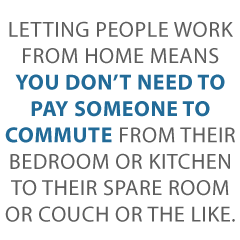

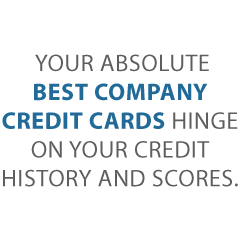

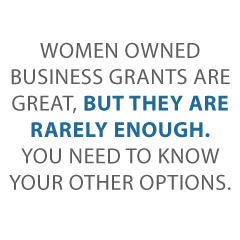


 Your gut was trying to tell you something.
Your gut was trying to tell you something.
